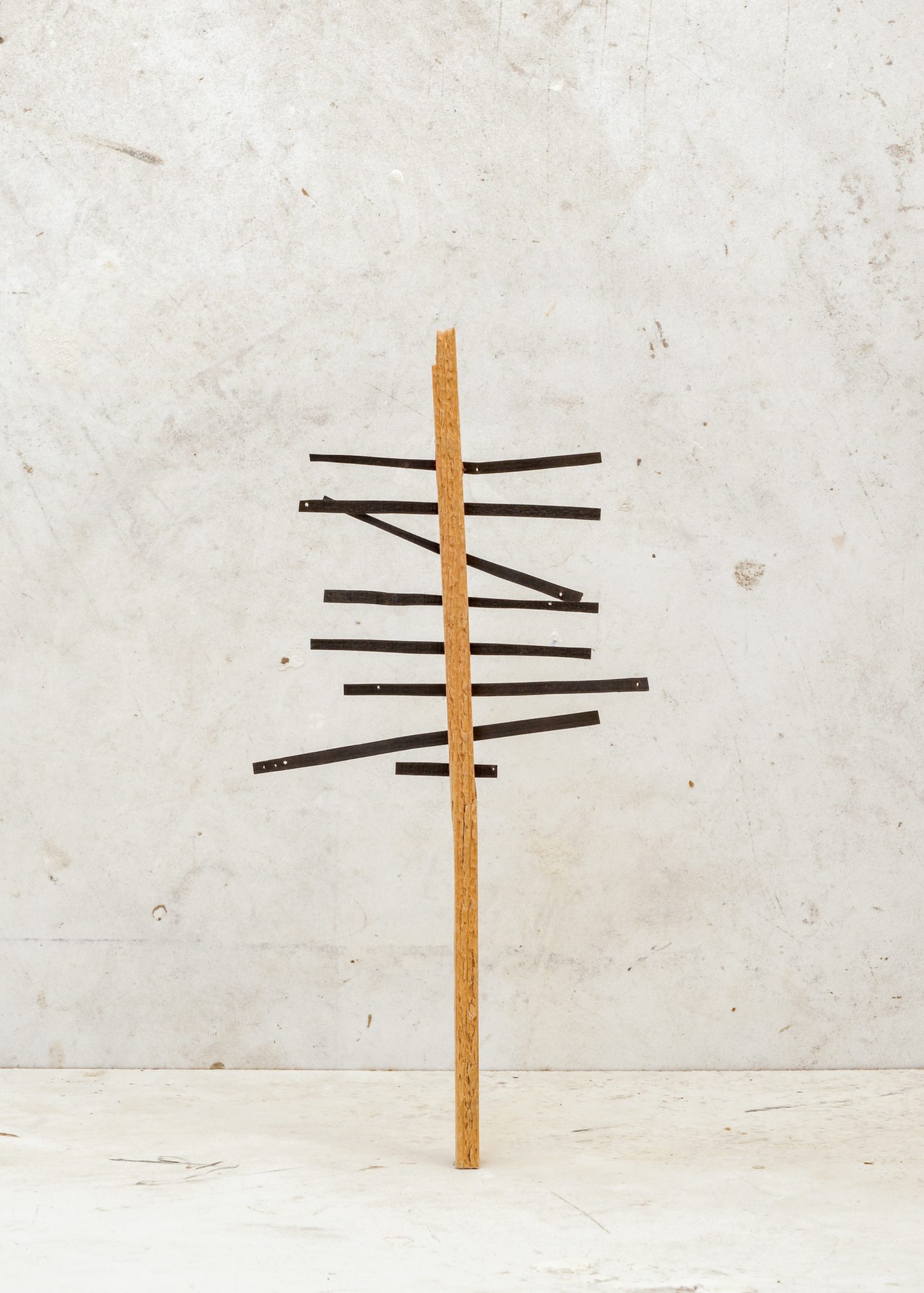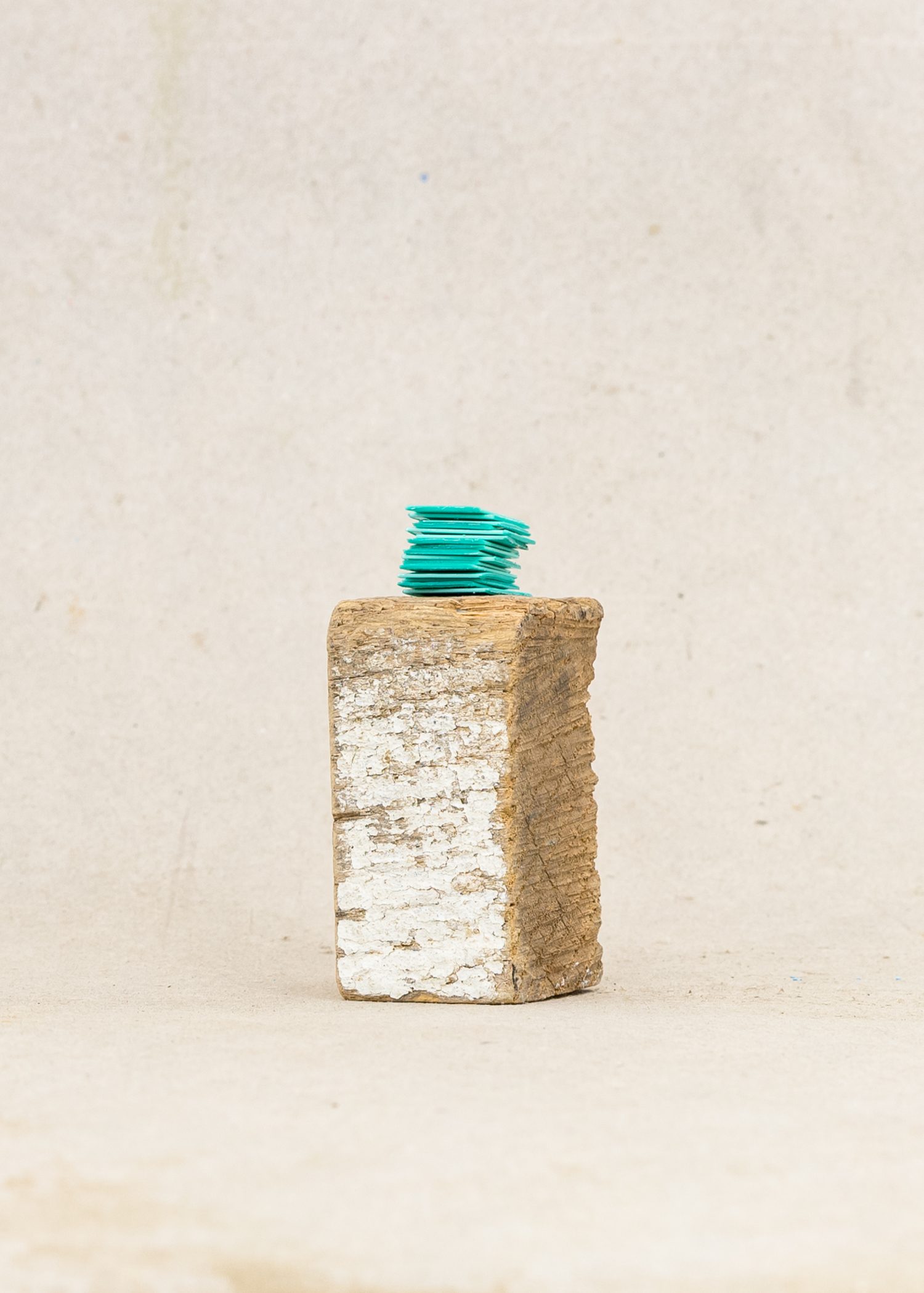Purple morning glories creep and sprawl against a white fence, embracing a sculpture of sorts, wooden arms akimbo; a blue plastic bin flipped over. One can almost hear the crunch of the photographer’s foot against the dried grass. The photographs of Sue Palmer Stone exist somewhere between the extremes of exuberance and decay, fragility and strength, loss and playfulness.

It has often been said that photography is a way of making sense of the world. Breaking down the dramas of life into manageable slices, pausing the fast pace of all that is moving around us, reordering a narrative to study it. But what about the overlooked? The quiet detritus that most of us pass right by? In Embodiment : Salvaging a Self, Stone creates conversations out of the discarded objects that litter the corners of our vision.
In a world in which everything is disposable, what does it mean to make something out of what others might term nothing? Stone has called the project a “salvage operation”. She began focusing on the work over three years ago, in part as a response to a mysterious autoimmune disorder that she had been diagnosed with. Early iterations of the project included more figurative self portraits but as time went on, the focus shifted. The sculptural forms she was both finding and creating took the lead. Within these forms, the viewer can find an abstraction of a self; something more open, more universal. Stone’s photographs ask us to put aside a modern day desire for constant stimulation in place of a quieter gaze, a more inquisitive eye attuned to small elements.

The photographs abound in such details—dust on the floor, the wobbly shadow of a wire, the texture of cheap wood filler sprayed a red not found in nature, the sunset-like gradient of rusted bolts on white metal. The images speak back and forth to each other; teal plastic chips piled on a block of wood bring to mind a half natural, half manmade cairn. The color appears again splashed on a beach trash bin, and once more as a thin wooden slat in the studio.
Moving between back alleys, junk yards, overgrown lots, and the studio, the photographs are pictures of precarity. A precarity that shapes modern life more and more. The slightest breeze, even the burst of a strobe light, could send everything tumbling down in an instant. “Many of the studio sculptures are literally precarious and usually fall down or apart right after I’ve captured the image I was striving for,” Stone notes. The manmade throwaways that she finds are assemblages of various materials—wood, pipes, furniture parts, plastic, mesh, trash cans. In a sense, they can be described as readymades; prefabricated objects recontextualized into art.

The French artist Marcel Duchamp was the first to use the term readymade to describe the sculptural pieces he created out of found parts. Duchamp’s Fountain, a signed porcelain urinal and Picasso’s Bull’s Head, a sculpture fashioned from a bicycle saddle and handlebars, grace the pages of art history textbooks and the walls of museums.
When they first appeared in the Dada movement, readymades were an intellectual, conceptual approach to art as opposed to more traditional mediums such as painting and sculpting from clay or stone. In describing readymades, Duchamp said: “an ordinary object [could be] elevated to the dignity of a work of art by the mere choice of an artist.” Part of the delight and shock of the readymade is the simple request to look at something familiar or unremarkable with new eyes. In Embodiment, we are doing just that—finding metaphors and surprise in the renewal of refuse.

This point of dignity runs through Stone’s photographs. The objects she captures are characters, both in relation to their surroundings and to the viewer. The materials are intellectualized but more than anything they are humanized. They stand tall, bend over, and recline. There is a mix of emotions to the work; a sadness in these dusty strip mall alleys coupled with a humor and defiance in their “will they or won’t they” tumble down constructions.
In her series, Stone pushes and pulls this uncertainty, with wit and grace. Right off the bat one finds pleasure in the shapes and colors of the images. But what stays with us is a sense of time’s vulnerability. It pervades these photographs. In real life these artefacts cannot live forever. They have a limited lifespan. The photographer has said that “it wouldn’t be possible to have an exhibit, say, of the actual sculptures. As photographs, these are captured moments in time.” And only in photographs does time transcend its own constraints.















